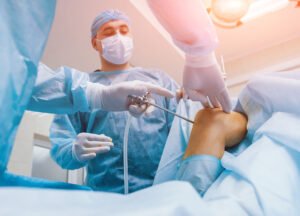Orthopedic surgery is a specialized field of medicine focused on treating musculoskeletal conditions and injuries. From fractures and joint replacements to spine surgery and sports injuries, orthopedic surgeons play a crucial role in restoring mobility and improving quality of life for patients. In this comprehensive guide, we’ll delve into the various aspects of orthopedic surgery, including common procedures, recovery process, risks and benefits, and the role of physical therapy in achieving optimal outcomes.
Understanding Orthopedic Surgery:
Orthopedic surgery encompasses a wide range of procedures aimed at addressing issues affecting the bones, joints, muscles, ligaments, and tendons. Common reasons for orthopedic surgery include fractures, arthritis, sports injuries, congenital deformities, and degenerative conditions such as osteoarthritis and disc herniation.
Types of Orthopedic Procedures:
Orthopedic surgery covers a diverse array of procedures tailored to meet the specific needs of each patient. Some of the most common types of orthopedic procedures include:
- Joint Replacement Surgery: This involves replacing damaged or arthritic joints with artificial implants, most commonly in the hips, knees, and shoulders.
- Arthroscopic Surgery: A minimally invasive procedure that uses a small camera (arthroscope) and specialized instruments to diagnose and treat joint problems such as torn ligaments, cartilage damage, and joint inflammation.
- Spinal Surgery: Includes procedures such as spinal fusion, discectomy, laminectomy, and disc replacement to address spinal conditions such as herniated discs, spinal stenosis, and spinal deformities.
- Fracture Repair: Involves realigning and stabilizing broken bones using surgical techniques such as open reduction and internal fixation (ORIF) or external fixation.
- Sports Medicine Procedures: Aimed at treating sports-related injuries, including ligament tears (such as ACL tears), meniscus tears, tendon injuries, and stress fractures.
Recovery and Rehabilitation: The recovery process following orthopedic surgery varies depending on the type and complexity of the procedure performed. However, rehabilitation is a crucial component of the recovery process and typically involves:
- Pain Management: Patients are provided with pain medications and other modalities to manage postoperative pain and discomfort.
- Physical Therapy: Physical therapy plays a vital role in restoring strength, flexibility, and function to the affected area. Therapeutic exercises, stretching, and manual therapy techniques are utilized to improve mobility and reduce stiffness.
- Activity Modification: Patients may need to temporarily modify their activities and avoid certain movements or heavy lifting to prevent complications and promote healing.
- Follow-up Care: Regular follow-up appointments with the orthopedic surgeon are essential to monitor progress, address any concerns, and make adjustments to the treatment plan as needed.
Risks and Benefits:
Like any surgical procedure, orthopedic surgery carries certain risks and benefits. While the primary goal is to alleviate pain, improve function, and enhance quality of life, potential risks include infection, blood clots, nerve damage, and implant failure. However, the benefits of orthopedic surgery often outweigh the risks for many patients, especially those experiencing significant pain and functional limitations.
The Role of Physical Therapy:
Physical therapy is an integral part of the orthopedic treatment continuum, both before and after surgery. Preoperative physical therapy helps optimize strength, range of motion, and functional status, which can improve surgical outcomes and facilitate a smoother recovery. Postoperative physical therapy focuses on restoring mobility, reducing pain and swelling, and regaining strength and function in the affected area.
In conclusion, orthopedic surgery plays a vital role in treating a wide range of musculoskeletal conditions and injuries. By understanding the various procedures, recovery process, risks and benefits, and the importance of physical therapy, patients can make informed decisions about their orthopedic care and work towards achieving optimal outcomes and improved quality of life.
Read More: best orthopedic surgeon in gurgaon


